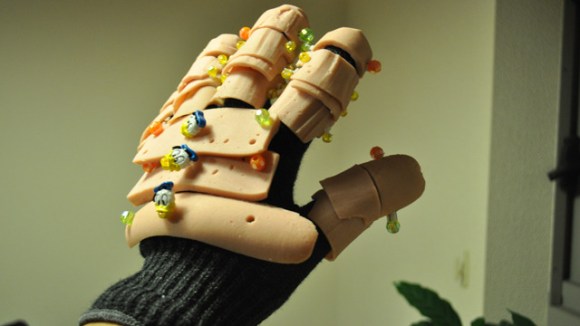 For those living in colder climates using a smartphone creates a major dilemma. We want to check our messages but wearing gloves often renders our touch screens useless. Sure, there are specialized smartphone compatible gloves, but going that way severely limits your choices of style and color.
For those living in colder climates using a smartphone creates a major dilemma. We want to check our messages but wearing gloves often renders our touch screens useless. Sure, there are specialized smartphone compatible gloves, but going that way severely limits your choices of style and color.
Driven to the edge with this problem, Yoshiaki Owari of the Daily Portal Z came up with a groundbreaking way to keep your hands warm, stylish, and functional. In addition, you’re left with a tasty dish at the end of the day when you use Sausage Gloves!
■ Inception
Like many great inventions, Sausage Gloves were born out of necessity. Originally Yoshiaki thought of developing a high-tech fiber or coating that would transform any gloves into smartphone-compatible gloves. However, that would be really, really hard.
Instead he drew on the age-old wisdom of the internet which taught us how smartphones were designed with sausage compatibility.
The answer suddenly became clear as crystal. Simply attach sausages to the fingertips of your favorite glove. This would allow you to use any handwear you like but retain the use of your mobile devices. It’s tasty too.
■ Troubleshooting
A sausage tip (in this case fish meat sausage) was hollowed out enough so that a gloved finger may enter. Preliminary fittings were successful.
Also, the sausage – even after modification – retained its smartphone compatibility. It’s amazing the foresight that Steve Jobs must have had to include this compatibility when initially designing the iPhone.
However, there were some critical design flaws. The sausage tip felt unbalanced on the hand. It was spicy and delicious, but it felt awkward. Also the pale pinkish color on a single finger spoiled the joie de vivre that the naked gloves alone once exuded.
■ Timeless Engineering
The first thought was to simply create gloves made of sausages, but that couldn’t work because sausages aren’t elastic. Instead, to rectify both initial design issues, Yoshiaki looked back to the Sengoku Period of Japan and its samurai armor technology.
He carved out the fish sausage into armor plates that would conform to the various contours of the human hand comfortably. The first hurdle was how to connect the plates. Anyone in the garment industry will tell you sausage is a notoriously weak textile. Yoshiaki circumvented this by using straws. The straws both reinforce the sausage and provide holes for linking.
Yoshiaki intended to use some Armani buttons to lock the sausage armor together. However, no such store carried these buttons on his way home from work. He had to settle for these beads from his local 100 yen shop.
Preliminary testing of the armor was an enormous success.
It was time to complete the Sausage Glove prototype.
The gloves was comfortable as well as stylish and even allowed for single-hand smartphone usage.
The perfect solution for winter touchscreen use had been found. But there’s more!
■ Eco-Friendly
Of course, sausage – fish or otherwise – has a limited period of use. However, this can be turned into a positive at the end of the day. First remove the sausage armor plating from your gloves and place into a bowl.
As an added bonus, you’ll find your glove is left looking like a festive Christmas tree.
Next, grind down the plating and shape it into a patty.
Then fry it up and serve with a demi-glace along with a side of greens. In the end you’ll have a surprisingly delicious and fluffy glove as a light dinner or midnight snack.
It’s the figure-eight of life. A fish is ground into meat and then shaped into sausage, the sausage is then forged into a glove and worn. After, the glove is ground back into meat and consumed. The food is digested and flushed into the ocean where it’s eaten by algae which is in turn eaten by insects or crustaceans which are then eaten by fish.
If all goes well that very same fish sausage will have returned to Yoshiaki’s hand in the not so distant future. So next time you want to keep your hands warm and use your smartphone, just build a fish sausage exo-skeleton with Donald Duck buttons. The Earth will thank you for it.
Source: Daily Portal Z (Japanese)
Images courtesy of Daily Portal Z

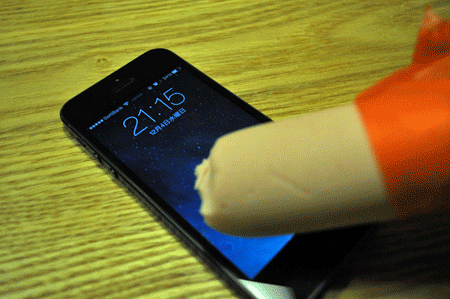
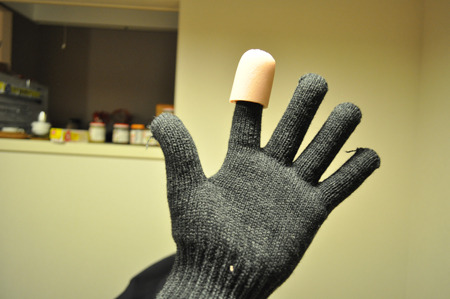
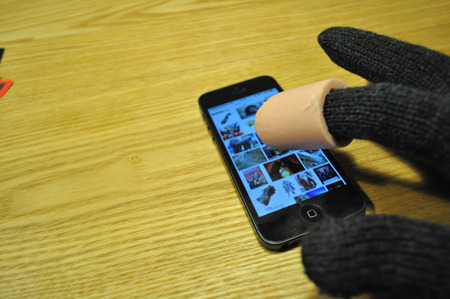
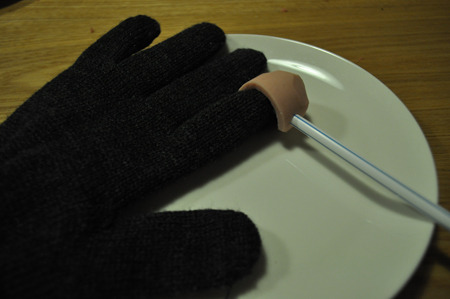
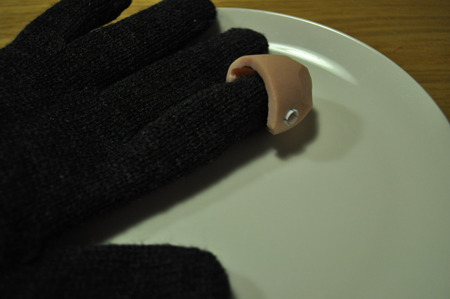
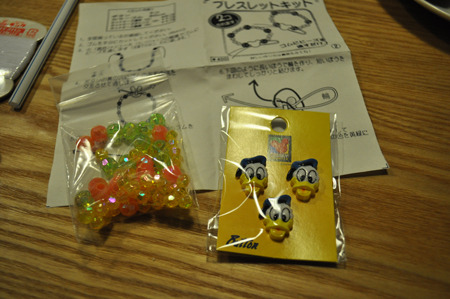

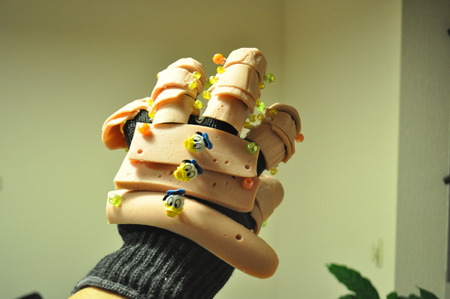
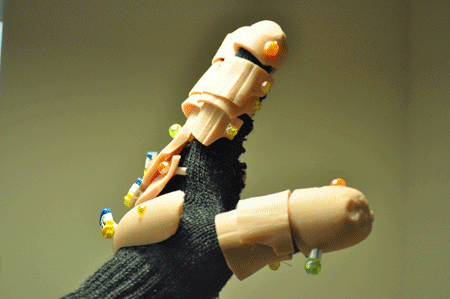
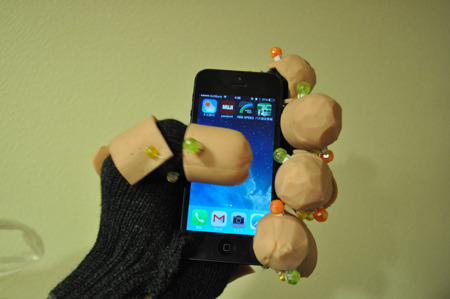
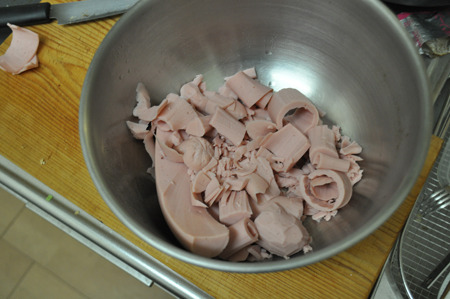

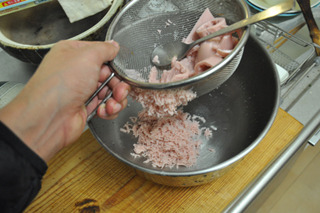
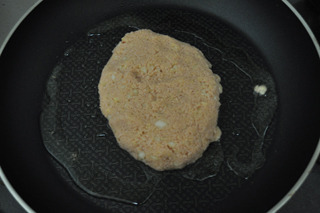
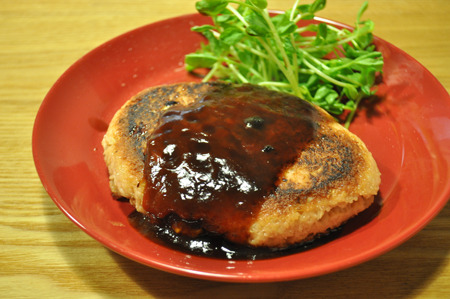
 Nuisance Cat smartphone gloves from Japan are an adorable problem we’d all love to have【Video】
Nuisance Cat smartphone gloves from Japan are an adorable problem we’d all love to have【Video】 Private booths are coming to Japan’s Shinkansen bullet trains even sooner than we’d thought【Video】
Private booths are coming to Japan’s Shinkansen bullet trains even sooner than we’d thought【Video】 The Purple Lucky Bag from Village Vanguard is an extra-large waste of money
The Purple Lucky Bag from Village Vanguard is an extra-large waste of money Dragon Quest Burgers and Slime drinks are coming to McDonald’s Japan【Video】
Dragon Quest Burgers and Slime drinks are coming to McDonald’s Japan【Video】 Rakuten randomly offers 58 New Year’s osechi feasts in Japan, but did we get a star or a dud?
Rakuten randomly offers 58 New Year’s osechi feasts in Japan, but did we get a star or a dud? Tokyo fish market breaks New Year auction record as single fish sells for over 500 million yen【Vid】
Tokyo fish market breaks New Year auction record as single fish sells for over 500 million yen【Vid】 What makes a good boss in Japan? Workers sound off in survey
What makes a good boss in Japan? Workers sound off in survey The best Starbucks Japan Frappuccinos we want to drink again in 2026
The best Starbucks Japan Frappuccinos we want to drink again in 2026 We revisited Sweets Paradise after a decade to see if Japan’s dessert buffet still delivers
We revisited Sweets Paradise after a decade to see if Japan’s dessert buffet still delivers Top Japanese cosplayer Enako returns to Comiket after 6 years, creates mayhem with admirers
Top Japanese cosplayer Enako returns to Comiket after 6 years, creates mayhem with admirers This is possibly the coziest train in all Japan thanks to onboard hot spring footbaths【Pics】
This is possibly the coziest train in all Japan thanks to onboard hot spring footbaths【Pics】 Starbucks Japan ready to get Year of the Horse started with adorable drinkware and plushies【Pics】
Starbucks Japan ready to get Year of the Horse started with adorable drinkware and plushies【Pics】 Japanese beef bowl chain Sukiya’s 2026 Smile Box lucky bag basically pays for itself
Japanese beef bowl chain Sukiya’s 2026 Smile Box lucky bag basically pays for itself Hayao Miyazaki says Happy New Year to Studio Ghibli fans with new art for Year of the Horse
Hayao Miyazaki says Happy New Year to Studio Ghibli fans with new art for Year of the Horse Cup Noodle tries an authentic Jiro-style ramen, but something’s not quite right
Cup Noodle tries an authentic Jiro-style ramen, but something’s not quite right That time Seiji called JASRAC to ask why he didn’t get paid royalties for his song being on TV
That time Seiji called JASRAC to ask why he didn’t get paid royalties for his song being on TV We found possibly the quietest Japanese-style hotel in Tokyo’s bustling Shinjuku district
We found possibly the quietest Japanese-style hotel in Tokyo’s bustling Shinjuku district Pizza Hut Japan’s hot lucky bags are perfect for a New Year’s pizza party
Pizza Hut Japan’s hot lucky bags are perfect for a New Year’s pizza party Japan’s oldest largetooth sawfish in captivity back on display in Mie Prefecture
Japan’s oldest largetooth sawfish in captivity back on display in Mie Prefecture 7-Eleven Japan starts new temporary luggage storage service in over 300 branches
7-Eleven Japan starts new temporary luggage storage service in over 300 branches Disillusionment at Tsukiji’s tourist-target prices led us to a great ramen restaurant in Tokyo
Disillusionment at Tsukiji’s tourist-target prices led us to a great ramen restaurant in Tokyo Starbucks teams up with 166-year-old Kyoto doll maker for Year of the Horse decorations【Photos】
Starbucks teams up with 166-year-old Kyoto doll maker for Year of the Horse decorations【Photos】 Tokyo considering law requiring more trash cans following litter increase in heavily touristed area
Tokyo considering law requiring more trash cans following litter increase in heavily touristed area Tokyo’s Tsukiji sushi neighborhood asks tour groups to stay away for the rest of the month
Tokyo’s Tsukiji sushi neighborhood asks tour groups to stay away for the rest of the month Tokyo event lets you travel back in time, for free, to celebrate 100 years since Showa era start
Tokyo event lets you travel back in time, for free, to celebrate 100 years since Showa era start Japan may add Japanese language proficiency, lifestyle classes to permanent foreign resident requirements
Japan may add Japanese language proficiency, lifestyle classes to permanent foreign resident requirements Sanrio theme park in Japan announces plans to expand into a Sanrio resort
Sanrio theme park in Japan announces plans to expand into a Sanrio resort Stamina-destroying “Paralysis Noodles” are Tokyo’s newest over-the-top ramen innovation
Stamina-destroying “Paralysis Noodles” are Tokyo’s newest over-the-top ramen innovation Survey asks foreign tourists what bothered them in Japan, more than half gave same answer
Survey asks foreign tourists what bothered them in Japan, more than half gave same answer Japan’s human washing machines will go on sale to general public, demos to be held in Tokyo
Japan’s human washing machines will go on sale to general public, demos to be held in Tokyo Japan’s deadliest food claims more victims, but why do people keep eating it for New Year’s?
Japan’s deadliest food claims more victims, but why do people keep eating it for New Year’s? We deeply regret going into this tunnel on our walk in the mountains of Japan
We deeply regret going into this tunnel on our walk in the mountains of Japan Studio Ghibli releases Kodama forest spirits from Princess Mononoke to light up your home
Studio Ghibli releases Kodama forest spirits from Princess Mononoke to light up your home Major Japanese hotel chain says reservations via overseas booking sites may not be valid
Major Japanese hotel chain says reservations via overseas booking sites may not be valid Put sesame oil in your coffee? Japanese maker says it’s the best way to start your day【Taste test】
Put sesame oil in your coffee? Japanese maker says it’s the best way to start your day【Taste test】 No more using real katana for tourism activities, Japan’s National Police Agency says
No more using real katana for tourism activities, Japan’s National Police Agency says Starbucks Japan reveals new sakura drinkware collection, inspired by evening cherry blossoms
Starbucks Japan reveals new sakura drinkware collection, inspired by evening cherry blossoms Updated cherry blossom forecast shows extra-long sakura season for Japan this year
Updated cherry blossom forecast shows extra-long sakura season for Japan this year
Leave a Reply